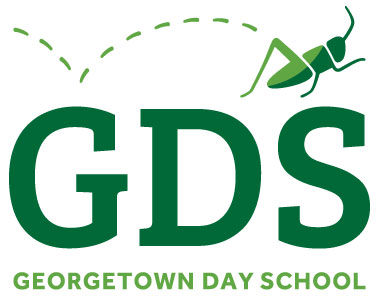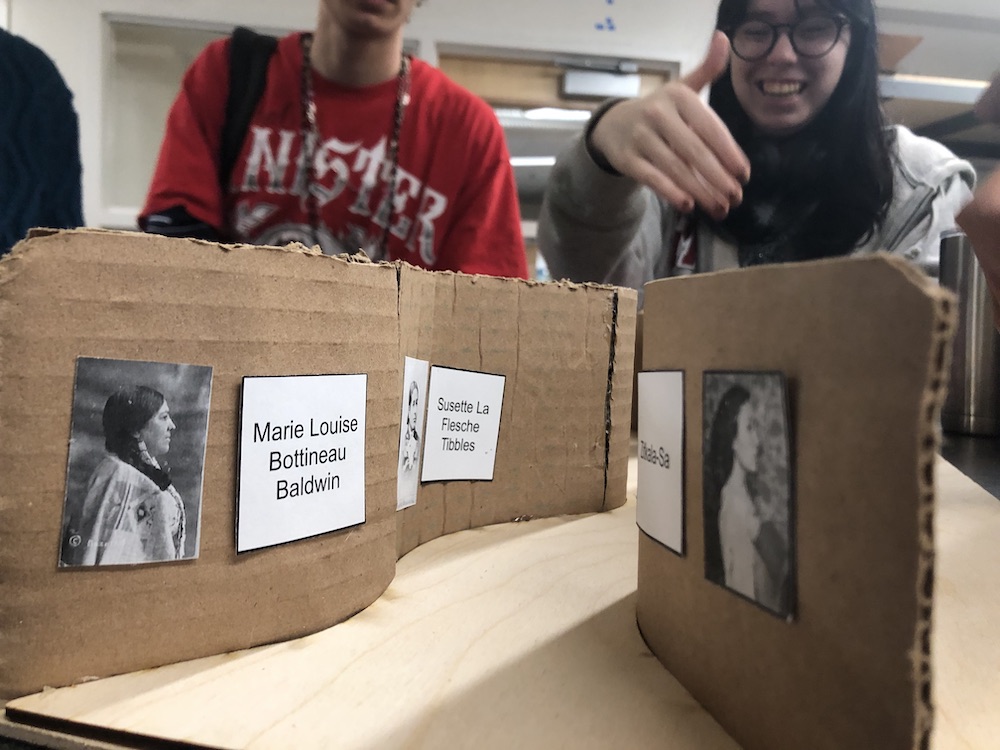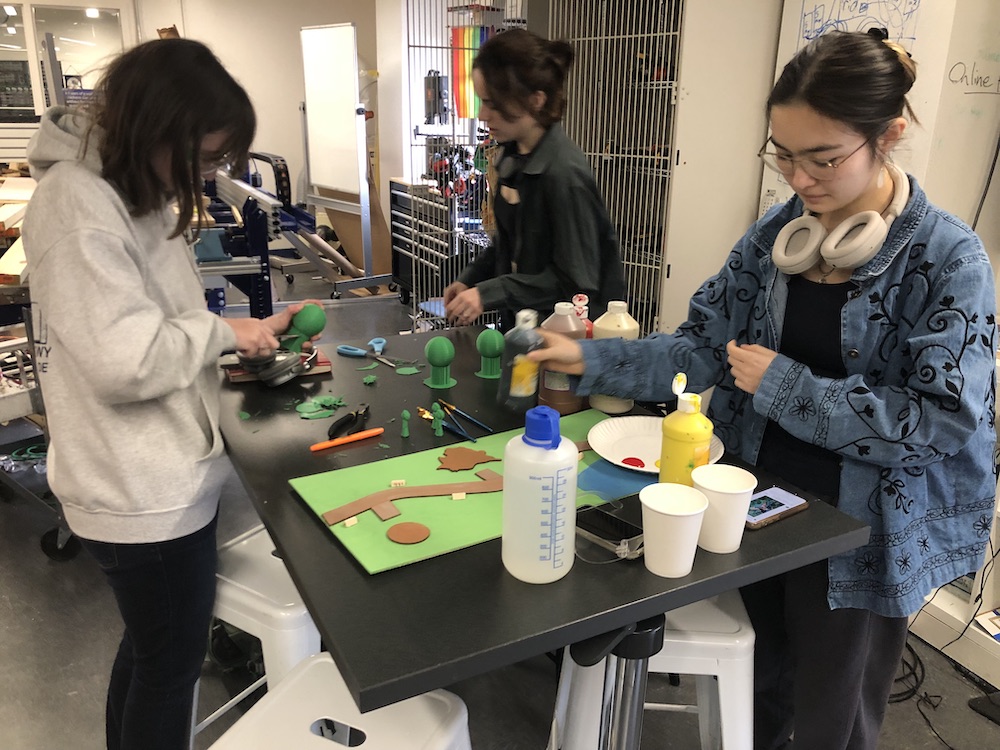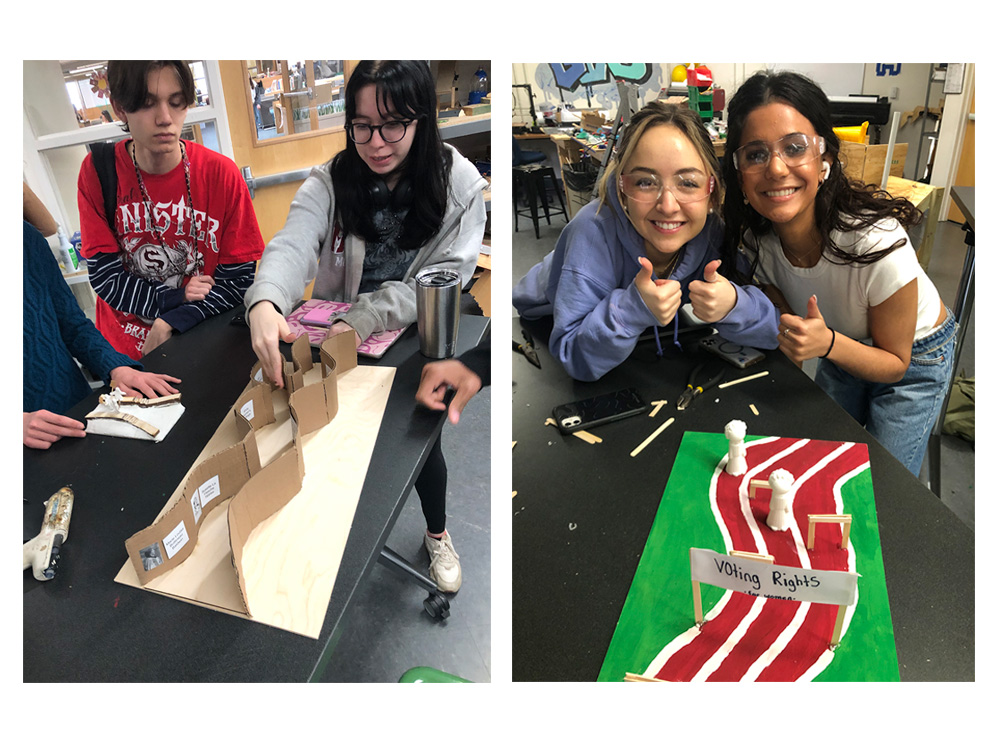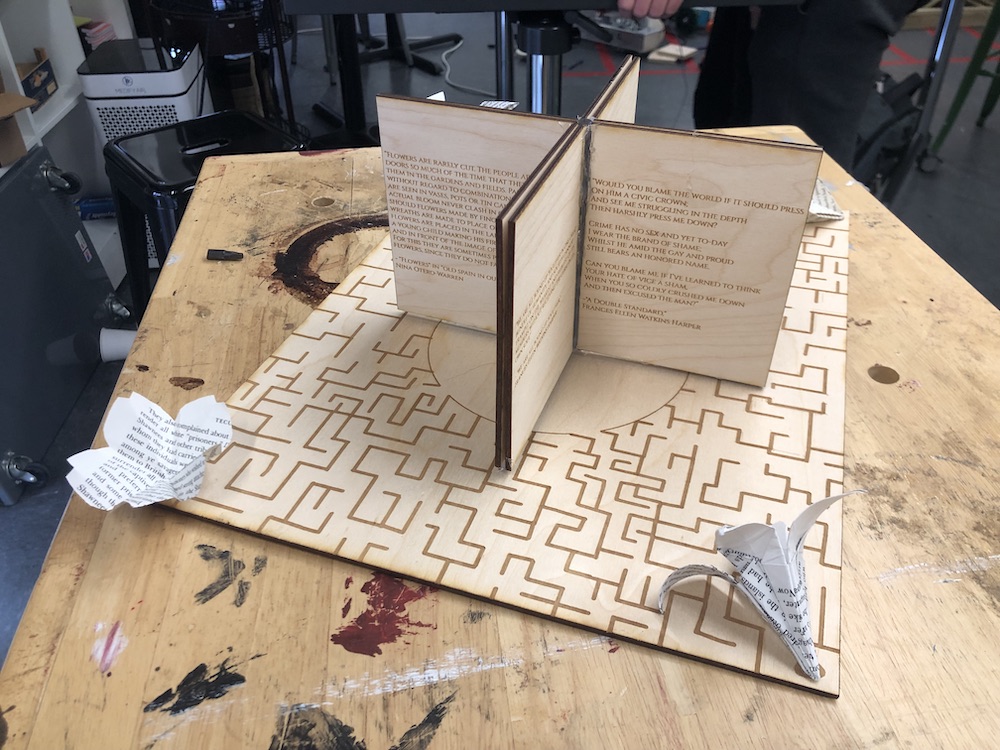This year, my 11th grade “American Studies: Focus on Gender” class studied the women’s suffrage movement in the United States and designed monuments to tell a more inclusive, complex story about the fight for voting rights.
For this project, we first studied the women’s suffrage movement, focusing on the groups that did not gain voting rights from the 19th Amendment, namely women of color. Students dug into the stories of activists who are often overlooked in the traditional suffrage narrative and the ways women of color eventually obtained the right to vote.
Next, our class learned all about monument design, focusing on the controversy over—and redesign of—a recent suffrage monument in New York’s Central Park that depicts Susan B. Anthony, Elizabeth Cady Stanton, and Sojourner Truth. In small groups, students came up with their own focus for a new suffrage monument that would tell a more historically accurate, inclusive story about the fight for voting rights.
The final stage of the project involved a week in the GDS Innovation Lab, prototyping their monuments with the help of Maker-in-Residence Matthew Bachiochi. Students used the laser cutter, 3-D printers, modeling clay, and good old-fashioned cardboard to create models of their monuments.
“I really enjoyed learning about women who are not well known and being able to honor them in our monument,” Cecelia Dyson ’24 said. “I also really enjoyed working on a creative project and being able to physically make things.”
I was so impressed by my students’ creativity. One group created a (fully playable!) card game that teaches players about under-represented people, events, and roadblocks in the suffrage movement, including “Icons” like Zitkala-Sa and Mabel Ping-Hua Lee. They also designed a 3-D model of a gazebo where visitors could play the game and learn about the history of each “Icon.”
Another group focused on the often-forgotten contributions of four women of color to the women’s suffrage movement, specifically through poetry, speech writing, and other forms of literary activism. They designed an intricate hedge maze that leads to four gardens with open-book monuments with the words of each author. They even studied the late 19th-century language of flowers to communicate messages about each activist in the gardens.
Ike Song ’24 was part of a group that focused on the complicated history of Asian American suffrage, delving into the intersections of immigration and voting rights. As Ike reflected, “I gained a truly deep knowledge of the legislation and how issues of citizenship, immigration, and suffrage are intertwined.”
“We had a lot of fun researching and writing, as well as building the prototype,” Rachel Schneider ’24 said. “I think we were all really invested in the project and are also friends outside of class, so it never felt like anyone was putting any more or less time or effort into the research and writing, which is how group projects typically feel—at least in my experience. I also really enjoyed the actual process of designing a monument. I was proud of the work we put in and the final product we achieved—and kept forgetting it wasn’t actually a monument on the Mall!!”
It was a joy to see students flex their creative muscles while diving deep into the history of women’s voting rights. Their final monuments were inclusive, complex, and historically nuanced—and we had a ton of fun bringing history to life!
